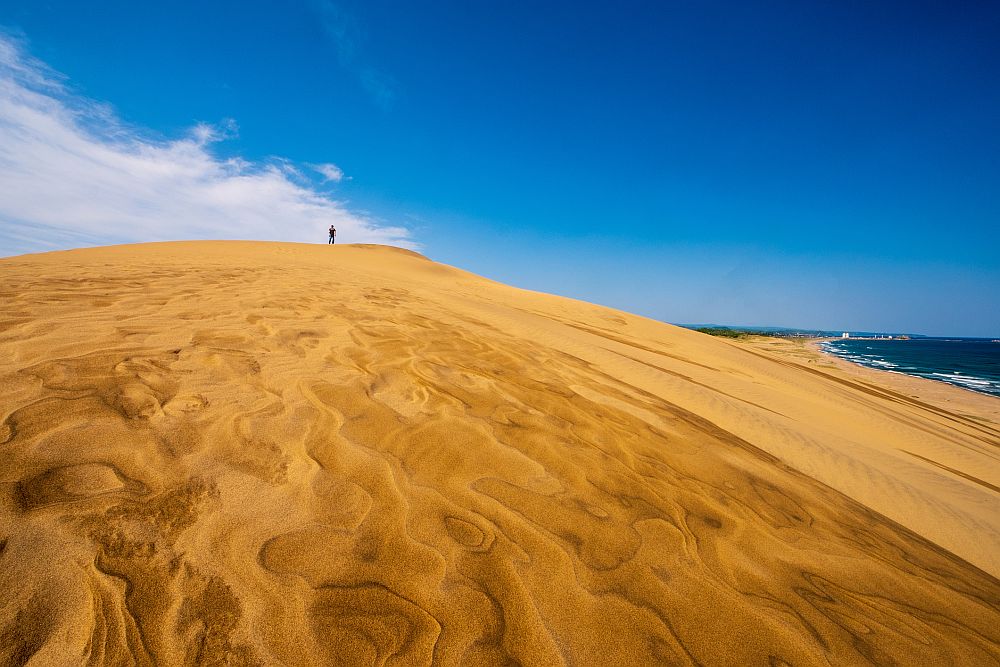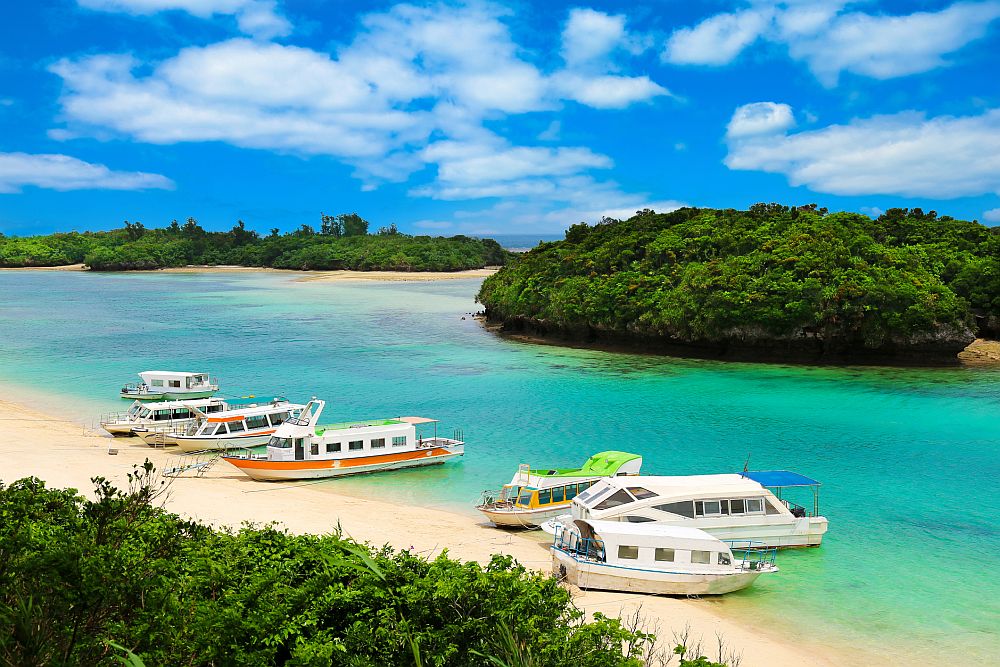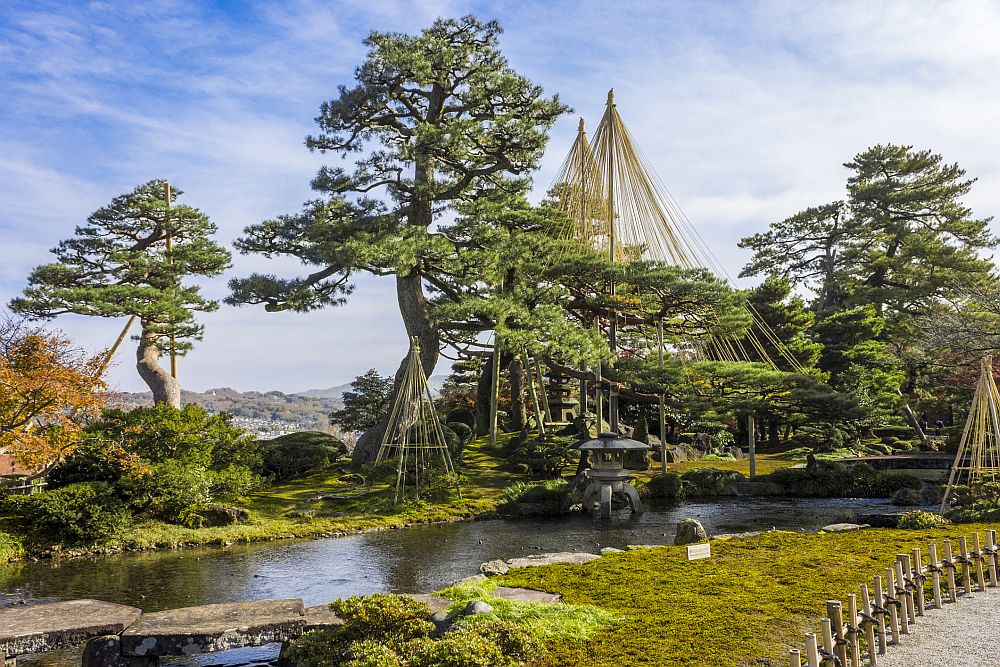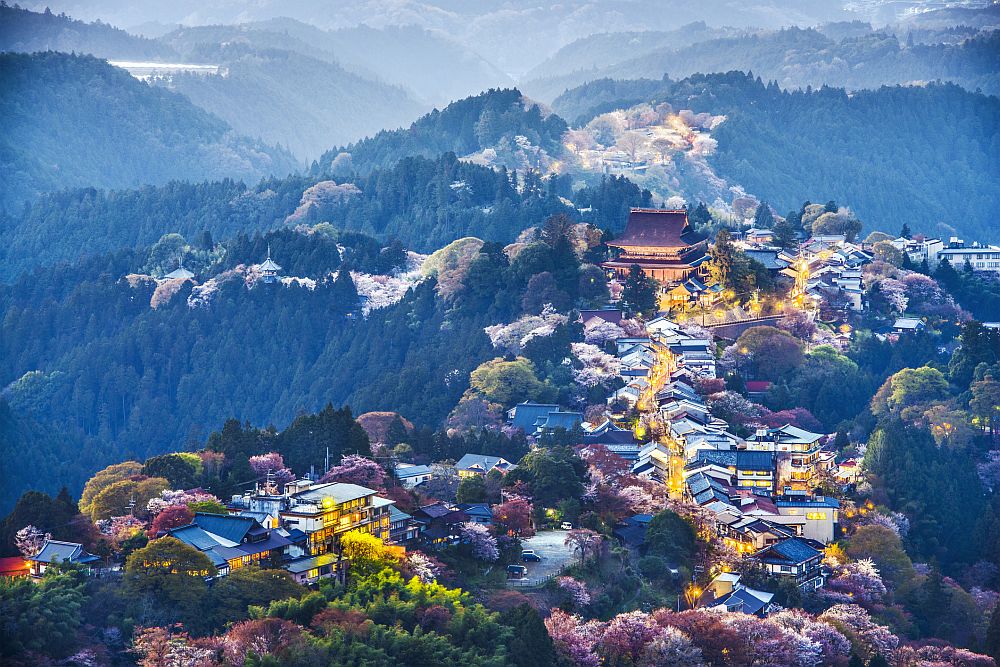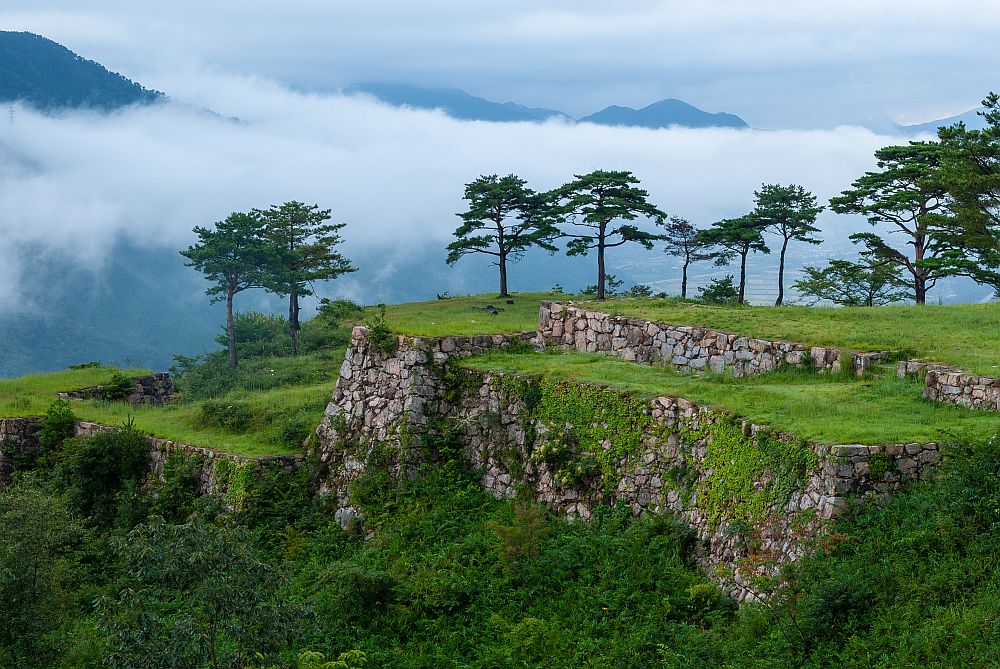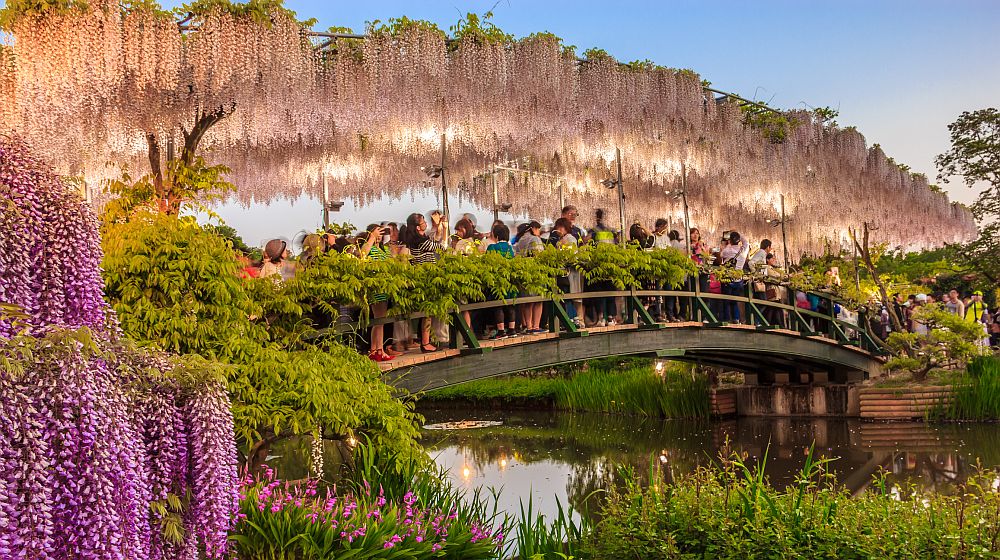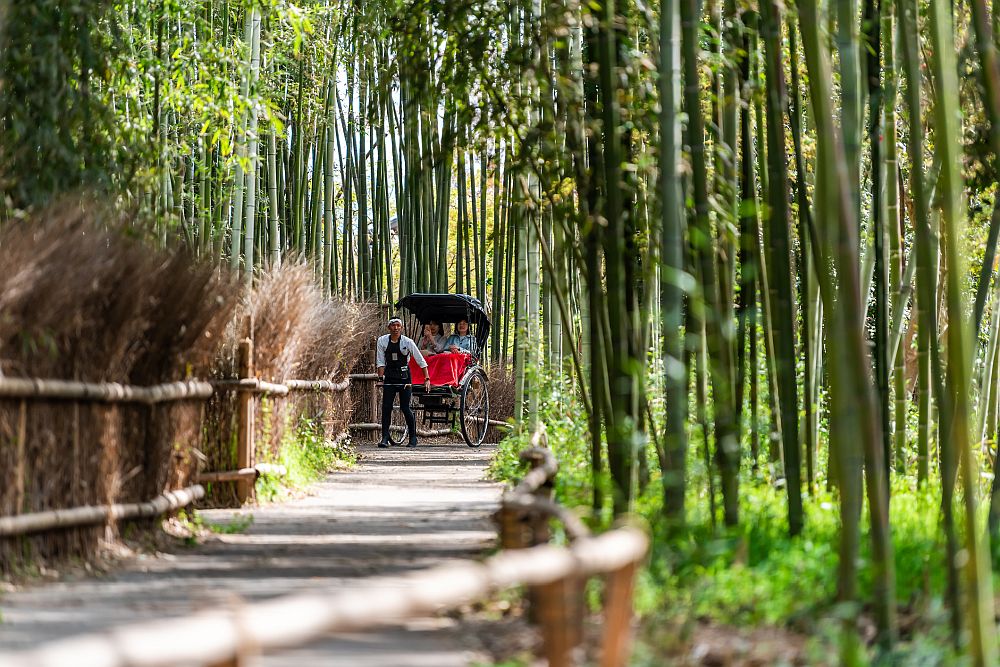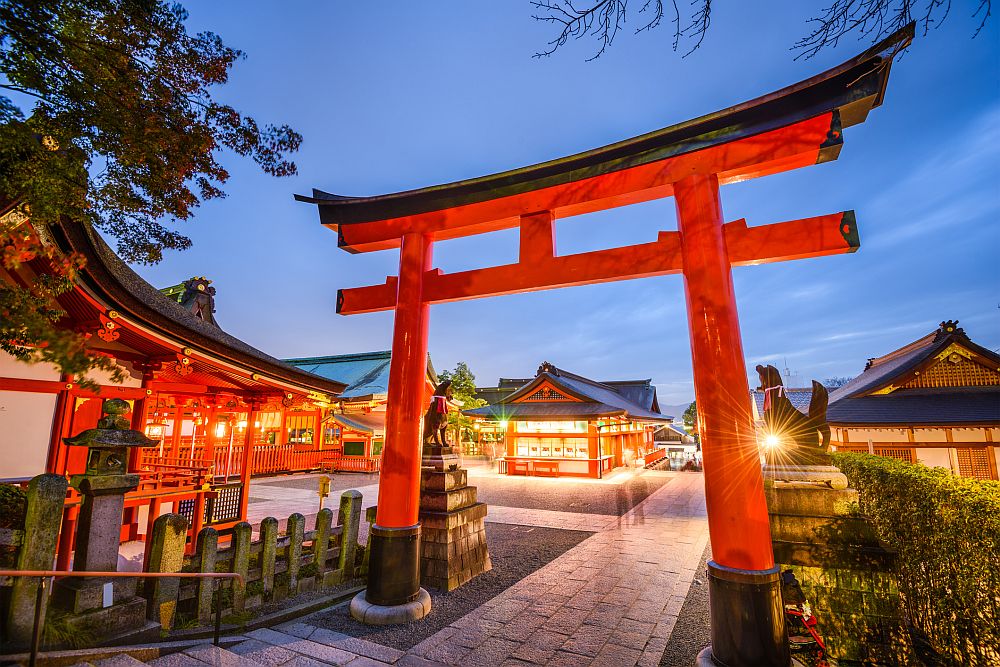The East Asia island country has the sixth-longest coastline in the world, accentuated by tall mountains. It also has tons of castles, temples, amazing greenery, culture, and history.
Most Beautiful Places in Japan
Japan is both modern yet traditional. There is so much beauty to see here, but there are spots that stand out. These charming spots make the list of the most beautiful places in Japan, as listed below.
1. Fushimi Inari, Kyoto
Kyoto is one of the most popular tourist destinations in Japan and the country’s cultural melting pot. Fushimi Inari also stands as a renowned Japanese shrine. To learn about this spectacular shrine, you need to know a thing or two about rice, since Inari is, after all, the Japanese deity associated with rice. Rice might be food to the rest of the world, but this simple grain is the essence of Japan’s culture. In the past, they grew rice to pay off warrior tax. The scarcity of rice gave rise to a culture that places the cereal right in the middle of the country’s religious and cultural rites. You would need to visit the Fushimi Inari Shinto shrine in Kyoto to savor the glory of rice and its god Inari. The shrine in southern Kyoto is one of the most beautiful places in Japan. The site is world-renowned for its torii gates, stacks of vermillion gates straddling the extensive region’s trails. Standing tall behind the shrine’s principal buildings, the place is a wonder to the eye. The Fushimi Inari shrine has over four thousand torii gates that arch across the trails that lead up to Mount Inari. With an elevation of 233 meters, the mountain trail forms an excellent hiking trail. The torii gates that form a brilliant red around the path are donations from individuals and corporations that pay homage to Inari’s power of prosperity. The shrine’s origins stem back to the 7th century when the Hata family built the Fushimi Inari shrine. The temple serving the god of sake and rice morphed into a shrine that provided luck and business fortune. While the popular shrine is an attraction by itself, the showstopper is the wooded pathway up the mountain. You will find many fox statues here, as foxes are believed to be the Inari’s messengers.
2. Arashiyama Bamboo Grove, Kyoto
Step into the Arashiyamo Bamboo Grove and find yourself instantly exported into a willowy green world. The beautiful, dense green grove is one of Kyoto’s top tourist sites. It comprises two distinct bamboo clusters set between the JR Sagano-Saiin train tracks and the Tenryu-Ji Temple grounds. The temple is a world heritage site. The 140 meters wide grove also backs the Nonomiya-Jinja shrine on its eastern section. It is a decorative relic that stems from Kyoto’s classical age. The forest’s region was home to noble imperial villas and temples. Back then, bamboo was a popular garden element. In the Edo period, the bamboo forest flourished for use as food and crafts production. Over time, the brilliant green and feathery forests of Arashiyamo were left alone, residential buildings taking their place. Fortunately, the government moved to protect them in 1967, preserving them as an iconic spot. The incredible soaring sight is one of the most photographed in Kyoto. The grove’s otherworldly aura pulls in walking crowds through its paved walkway. The ‘Bamboo Alley’ can have monstrous crowds on it during high season in fall and spring. Its walkway snakes its way uphill, leading to the imposing Okochi-Sanso Villa, an area with beautiful gardens and Kyoto’s spectacular views.
3. Ashikaga Flower Park, Ashikaga
If you want to immerse yourself in the symbol of endurance and longevity – the wisteria plant – visit the Ashikaga Flower Park. The wisteria plant is not only one of the most exquisite of vining shrubs, but it has various deep symbolism as well. Fuji, the Japanese name for wisteria, features in many of the island country’s family crests. Wisteria plants can outlast a century, so they are the epitome of everlasting wisdom. There are wisteria variants in red, blue, and lavender. Ashikaga Flower Park is a dream destination is less than two hours from Tokyo and measures 9 hectares. The flower park highlights the beauty of diverse flowers, but its wisteria is the star attraction. May turns this park into one of the most beautiful places in Japan. This is the season when the charm of the wisteria is at its peak. The Great Wisteria Festival kicks off at the park, coinciding with the Golden Week. The Golden Week is a Japanese spring public holiday that lasts through the end of April to May’s first days. Ashikaga’s Great Wisteria Festival in Tochigi prefecture is a top tourist attraction in Japan, displaying expanses of wisteria gardens. The cherry on the top of the sea of blooming yellow, purple, white, and pink is the Great Wisteria, a 150-year-old shrub. Ashikaga has 350 of these beautiful plants at the peak of their beauty in spring, making it the most expensive time to visit the park. The park has more to offer than its legendary wisteria tunnels. The public garden has thousands of other flower varieties blooming in all seasons. The historic and scenic park has vibrant spiraeas and tulips blossoming in April. The hydrangeas cover the park in white, blue, and pink in June as the country’s rainy season sets in. In fall, the park assumes a purple shade as the amethyst sage takes over. In December, there are the winter light flowers that look like wisteria. Some park’s features that you should not miss are the flower pyramid pond and the Rainbow Garden full of roses.
4. Takeda Castle, Asago
Visit Hyogo Prefecture’s Takeda castle on a foggy Japanese morning and see a magical ‘castle on a cloud’. The castle appears to be a mystical fortress in the clouds in autumn and makes one of the most beautiful places in Japan. The Takeda castle comprises ruins on 350 meters elevation in the northern Hyogo Prefecture Mountains. Built in the 1400s, the ancient castle has been through wars but was left vacant in the 1700s. It fell to ruins over time but went through a restoration in the 80s and 90s. It then became a tourist site. There are no actual buildings at Takeda castle. That said, most of its original foundations are in one piece. The castle ground’s layout is visible. You can view the central fortress’s outline and its three wings. There is a one-way track through the castle ground and excellent views of the mountain-scape and the valley with a town below. For the ultimate Takeda Castle adventure, visit the area between October and November. Be there before sunrise and bring along a flask of coffee. If you are lucky, find the morning mist shrouding the ruins around sunrise time. One of the best viewing sites is the Ritsuunkyo on the slopes of the mountain.
5. Mt. Yoshino
One of the most significant aspects of Japanese culture is the celebration of sakura or the cherry blossom. Tourists flock to the island country to observe and partake of the centuries-old tradition, visiting parks, and enjoying picnics or hanami. You will find the chefs outdoing themselves creating cherry blossom-themed cuisine. Mt. Yoshino in Nara Prefecture is not only one of the most beautiful places in Japan, but also has an outstanding cherry blossom display. Mount Yoshinoyama is also a world heritage site because of its longstanding relationship with Shinto and Buddhism religions. Mystical monks and worshippers seek enlightenment in the region endowed with natural glory and spiritual depth. You can easily access Mt. Yoshino by train from Osaka, Nara, or Kyoto. The best way to explore the area’s beauty is by foot, after arrival at Yoshino Station. That said, there are bus tours and the Yoshino Ropeway. The Ropeway will give you an aerial view of the majestic mountain region’s 30,000 plus cherry trees. There are four cherry tree divisions on the mountain, planted to blossom in different seasons. The most astounding seasonal view, however, is in spring, when the cherry blossoms bloom. The mountain’s four regions, which start with the lower section and end with the upper and inner regions, have 1000 cherry trees. Mt. Yoshino’s cherry blossoms are the inspiration behind much of the country’s folk songs, waka poetry, and art. Some other attractions in the region include the Nyoirinji Temple and the Kinpusenji Temple.
6. Kenrokuen Garden
Japan has gorgeous landscaped gardens. In the East Asia country, a garden is not just an art form but has heavy religious meanings. The Japanese also create their gardens to complement other art forms. Every visitor to Japan must visit one of these gardens. To miss out is a tragedy. Kenrokuen Garden is one of the most beautiful places in Japan, full of trees, charming bridges, flowers, teahouses, and walking trails. The garden also makes it to the list of the top three must-see landscaped gardens in the country. Kenrokuen is a feat of landscaping and planning excellence. It was the brainchild of the Maeda family that built it in 1676. Its original name was Renchitei. The family tended to the garden over three centuries, restoring it after a fire razed it down in 1759. In 1822, the garden became Kenrokuen, a name that roughly translates to the “Garden of the Six Sublimities“. These six elements include seclusion, broad views, human artistry, antiquity, flowing water, and spaciousness. As per old Chinese theories, these six elements can create a perfect garden. The garden has an expansive park spanning over 25 acres. The park-like space was Kanazawa castle’s outer garden. A 3.5-meter high fountain is the garden’s attraction. The fountain is Japan’s oldest and uses the natural power of water pressure to refresh the garden. The Kasumigaike pond at the end of the undulating garden pathway and several seclusion spots is a remarkable sight. At the Hisagoike pond, you will find the Yugao-tei, a 1774 teahouse, and the oldest of all buildings in the garden. The beautiful landscape also hosts the Kotojitoro Lantern, the garden’s symbol, and the Meiji Memorial.
7. Kabira Bay, Ishigaki Island, Okinawa Prefecture
The Japanese say that the Kabira bay is so beautiful that an artist cannot ensnare it in one painting. The bay on Ishigaki Island shifts colors from green to blue under the bright sunlight. The bay is home to diverse tropical fish and reefs. It is also the first area to cultivate the black pearl. Therefore, if you are looking for a different flavor of Japan, away from the mountains and skyscrapers, try Kabira bay. You will find clean white sandy beaches, glass-like waters, joyful people, and many coral reefs. Did you know Okinawa has one of the most laid back and happiest communities on earth? Okinawans are flourishing in their love for their folk music and dance in the coastal area’s scenic beauty. The thing about Kabira bay is that you cannot take a swim here despite all its magnificent beauty. The area around Ishigaki Island has intense, dangerous currents. Having said that, there many activities to take part in at the bay, besides the simple pleasure of reveling in its beauty. As an illustration, take a glass-bottom boat tour to the waters and view exquisite coral and fish.
8. Tottori Sand Dunes
The Tottori dunes in Tottori Prefecture have a desert aura that beautifully contrasts the mountain feel of Japan. They make up the Sanin Kaigan National Park and are about 16 kilometers, spreading along the coast of the Sea of Japan. The dunes result from millennials of sand deposits from the Sendaigawa River to the sea. Over time, the currents washed the sand back to the coastline, creating the two-kilometer wide dunes. Some of them are over 50 meters high, changing their shapes constantly as the wind and tide movements go over them. The dynamic landscape is a sightseeing attraction with horse and camel riders waiting to take you deep into the enchanting landscape. If you are feeling more adventurous, try the sand boarding and paragliding amenities available from local operators. For excellent views of the dunes, visit the Sakyu Center observation deck and go sightseeing on a chairlift. The Sand Museum with tons of sand sculptures is but a short walk from the dunes.
Visit Japan: Final Word
This concise list of 8 of the most beautiful places in Japan is but a start. Visit the land of contrasting landscapes, religion, and culture and find more stunning places.
